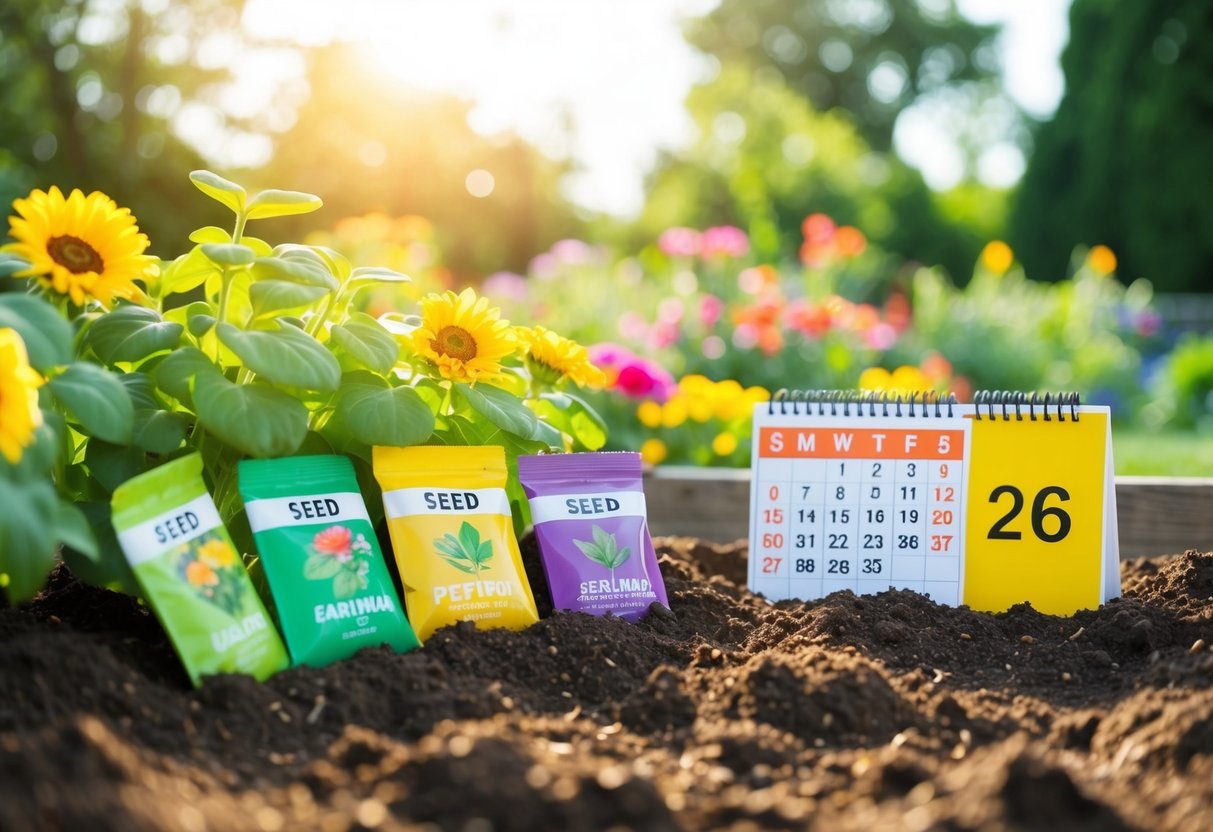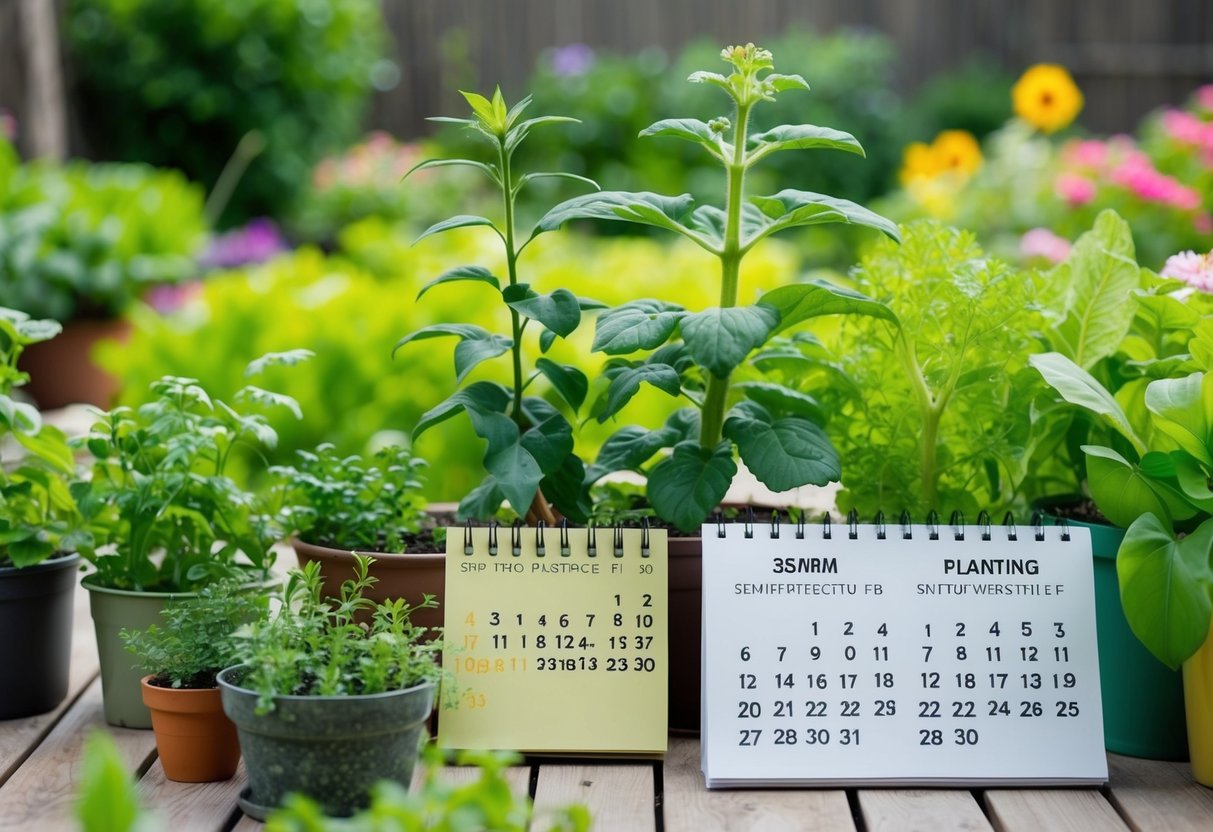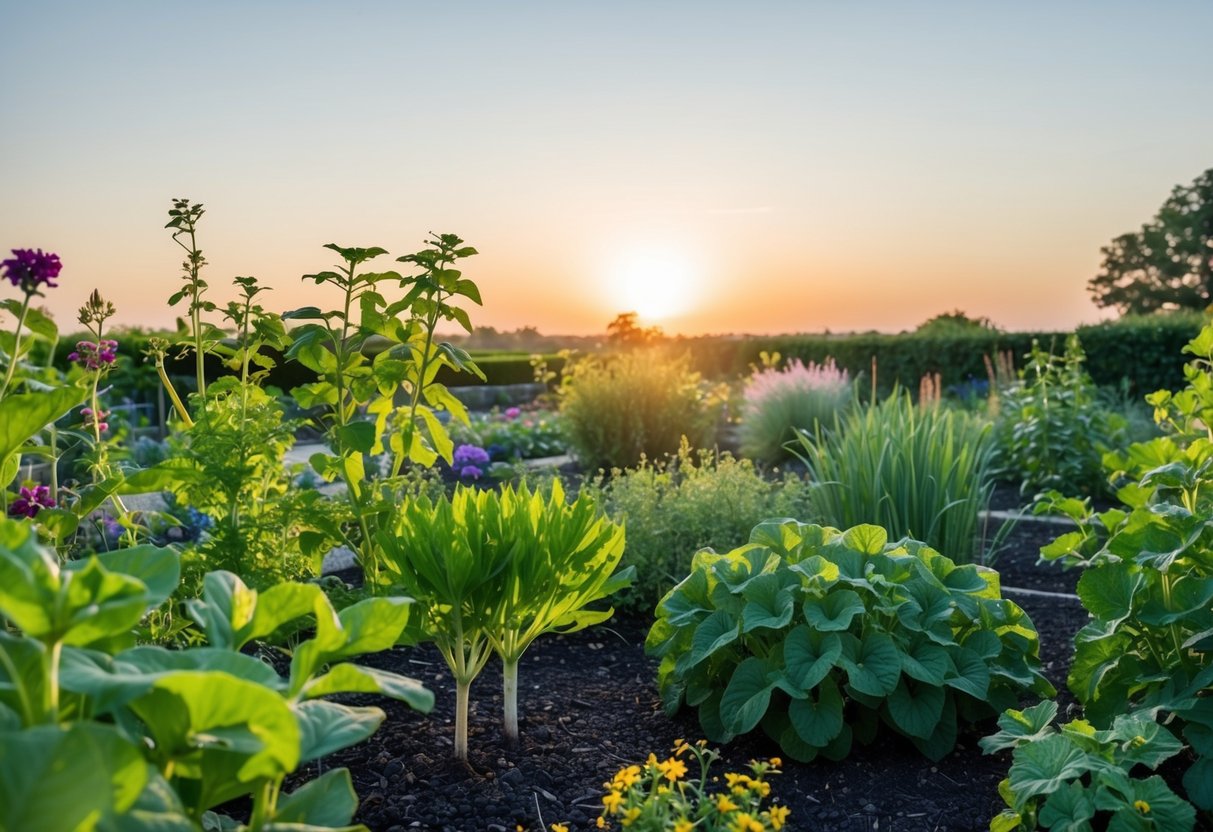What is the Latest You Can Plant a Garden? A Seasonal Guide
Thinking about starting a garden but worried you might be too late? You’re not alone. Many people wonder when the last possible moment is to plant their favorite fruits and vegetables without missing the growing season. The truth is, you can still plant many crops late into the season, depending on what you want to grow and where you live.

Certain vegetables are known for their adaptability to late planting. For example, bunching onions can still be planted in June in various USDA growing zones.
Consider exploring regional planting calendars or guides. They help you understand what you can plant based on your location and the time of year.
As you dive into the world of late-season gardening, think about your local climate and choose crops that will thrive. Some plants love the warmth, while others do better with cooler temperatures. With the right selection and good timing, your garden can still flourish even if you start later in the season.
Understanding Plant Hardiness Zones

Plant Hardiness Zones are crucial for gardeners to predict which plants will thrive in their areas. These zones consider average low temperatures, helping you determine frost risks and optimal planting times.
Plant Hardiness Zone Significance
Plant Hardiness Zones are essential for deciding what to plant. These zones are based on the coldest temperatures an area typically experiences. Knowing your zone helps in selecting plants that can survive the winter. This way, you avoid the disappointment of frost-damaged plants.
For instance, some plants are suitable for mild climates, while others withstand colder weather. This information aids in planning a successful garden. The USDA’s zone map helps guide your choices.
Locating Your Zone
Finding your Plant Hardiness Zone is simple. The USDA Plant Hardiness Zone Map is updated with data from numerous weather stations. It divides regions based on their average minimum winter temperatures.
You can easily look up your area on the map to find out its zone. It’s divided into 13 zones, each with A and B subcategories. Knowing your zone ensures you plant the right species at the right time. This knowledge prevents frost damage and promotes healthier growth.
Deciding What to Plant

When thinking about what to plant in your garden, consider the types of crops and flowers that thrive in your climate. Understanding whether to opt for vegetables or flowering plants will help ensure a flourishing garden.
Choosing the Right Vegetables
For a successful vegetable garden, it’s important to choose crops that fit your climate and season.
Cool-season crops like lettuce and spinach can withstand lower temperatures, making them suitable for planting early in the year. On the other hand, warm-season vegetables such as tomatoes and peppers thrive in sunny, summer conditions.
Consider the amount of sunlight your garden receives. Ensure you have enough sunlight for plants, as this will dictate what you can successfully grow. Also, think about your available space, as large plants like pumpkins need more room to spread out, while carrots and radishes can grow in smaller areas.
Annuals vs. Perennials
Choosing between annuals and perennials is key when planning your garden.
Annuals are plants that complete their life cycle in one growing season. They are perfect for those who like to change their garden’s look each year. Popular annuals include marigolds and petunias, which provide vibrant colors during their growing season.
Perennials, such as lavender and peonies, live for several years and return each spring. These plants can be a great choice if you prefer a garden that maintains its structure over time. When selecting, check the climate suitability to ensure that your perennials will thrive year after year in your region.
Preparing for Planting

When getting ready to plant your garden, focusing on seeds, seedlings, and the quality of your soil is essential. Each plays a crucial role in setting the stage for a thriving garden.
Working with Seeds and Seedlings
Starting with seeds and seedlings requires attention to detail. Choose seeds suitable for your climate. Look for those that can thrive in the time remaining in the growing season.
Follow the depth and spacing directions on the seed packets, planting seeds about three times as deep as their diameter.
For seedlings, make sure they are healthy with no wilted leaves or visible pests. When planting, space them according to the recommendations to allow for growth and air circulation. If you’re new to gardening, try planting a mix of seeds and seedlings to see what works best for you.
Soil Quality and Preparation
Quality soil is the foundation of a healthy garden. Begin by removing weeds and clearing debris from your planting area. This step allows roots to grow unimpeded in the soil.
Improve soil quality by adding organic material, like compost, which boosts nutrients.
Use a rototiller or hand tools to loosen the soil, ensuring it’s not compacted. Check the pH levels, adjusting them to suit the plants you have chosen. Testing kits are available at garden centers if needed.
Consider rotating your plants each season to maintain soil health. Good soil care leads to strong, healthy plants.
Optimal Planting Times

Knowing when to plant is key to a successful garden. Timing impacts how well plants grow and when you can harvest. The best times to plant can depend on your local climate and the specific vegetables or flowers you have in mind.
Spring Planting Dates
In spring, the soil warms and days get longer, marking a great time to start gardening. Many people use a planting calendar based on frost dates to choose the best dates.
For example, in areas with a last frost date around April, you might begin planting cold-tolerant vegetables like spinach and peas in March.
In April and May, as the chance of frost lessens, you can plant more varieties. Consider starting beans, carrots, and tomatoes. Always check the dates for your specific region to optimize the growing season.
Fall Planting Strategies
Fall gardening focuses on planting before the first frost. Many regions have an ideal window for sowing seeds or transplanting. Look at a planting calendar to determine when to start.
For instance, in hardiness zone 5, planting should be done by mid-October to avoid frost damage.
Focus on hardy crops that mature quickly, like lettuce, radishes, and kale. These can thrive in cooler temperatures.
Another strategy is to clear the garden of summer crops and use mulch to protect young plants from unexpected cold snaps. Always consider the expected frost dates to time your planting correctly.
Caring for Your Garden

Caring for your garden requires attention to managing pests and weeds, ensuring proper watering, and knowing when to transplant and harvest. By focusing on these aspects, your plants can remain healthy and productive.
Dealing with Pests and Weeds
Pests and weeds can quickly disrupt your garden. Begin by checking your plants regularly for any signs of insects or disease. If you notice any, consider using natural remedies like neem oil or insecticidal soaps. These are both effective and safe for your plants.
For weeds, mulching can help prevent them from growing.
Lay down a thick layer of mulch around your plants to block sunlight and hinder weed growth. Pull out any weeds by hand to prevent them from stealing nutrients from your plants. This hands-on method ensures your garden stays healthy and thriving.
Watering and Maintenance
Proper watering is essential for your garden’s success. Most plants need about an inch of water per week.
Use a drip irrigation system for consistent watering, especially in dry weather. This method saves water and targets the roots directly.
Regularly check the soil moisture by sticking your finger into the ground. If it feels dry, it’s time to water.
Maintenance also includes keeping your plants trimmed and removing any dead leaves. This helps prevent disease and encourages new growth. Regular maintenance will significantly improve your garden’s yield over time.
Transplanting and Harvesting
Transplanting gives young plants a better chance to thrive. To harden off seedlings, gradually expose them to the outdoors a week before transplanting. This helps them adjust to new conditions without shock.
When planting vegetables, timing is critical. Follow guidelines for each plant type, as some vegetables, like lettuce, prefer cooler temperatures, while others, such as tomatoes, need warmth. Harvest your crops when they are ripe but not overripe. This ensures the best flavor and encourages more growth. Knowing the right time to transplant and harvest is crucial for maximizing your garden’s yield.







